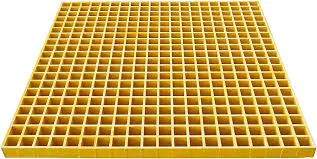
-
 Afrikaans
Afrikaans -
 Albanian
Albanian -
 Amharic
Amharic -
 Arabic
Arabic -
 Armenian
Armenian -
 Azerbaijani
Azerbaijani -
 Basque
Basque -
 Belarusian
Belarusian -
 Bengali
Bengali -
 Bosnian
Bosnian -
 Bulgarian
Bulgarian -
 Catalan
Catalan -
 Cebuano
Cebuano -
 China
China -
 China (Taiwan)
China (Taiwan) -
 Corsican
Corsican -
 Croatian
Croatian -
 Czech
Czech -
 Danish
Danish -
 Dutch
Dutch -
 English
English -
 Esperanto
Esperanto -
 Estonian
Estonian -
 Finnish
Finnish -
 French
French -
 Frisian
Frisian -
 Galician
Galician -
 Georgian
Georgian -
 German
German -
 Greek
Greek -
 Gujarati
Gujarati -
 Haitian Creole
Haitian Creole -
 hausa
hausa -
 hawaiian
hawaiian -
 Hebrew
Hebrew -
 Hindi
Hindi -
 Miao
Miao -
 Hungarian
Hungarian -
 Icelandic
Icelandic -
 igbo
igbo -
 Indonesian
Indonesian -
 irish
irish -
 Italian
Italian -
 Japanese
Japanese -
 Javanese
Javanese -
 Kannada
Kannada -
 kazakh
kazakh -
 Khmer
Khmer -
 Rwandese
Rwandese -
 Korean
Korean -
 Kurdish
Kurdish -
 Kyrgyz
Kyrgyz -
 Lao
Lao -
 Latin
Latin -
 Latvian
Latvian -
 Lithuanian
Lithuanian -
 Luxembourgish
Luxembourgish -
 Macedonian
Macedonian -
 Malgashi
Malgashi -
 Malay
Malay -
 Malayalam
Malayalam -
 Maltese
Maltese -
 Maori
Maori -
 Marathi
Marathi -
 Mongolian
Mongolian -
 Myanmar
Myanmar -
 Nepali
Nepali -
 Norwegian
Norwegian -
 Norwegian
Norwegian -
 Occitan
Occitan -
 Pashto
Pashto -
 Persian
Persian -
 Polish
Polish -
 Portuguese
Portuguese -
 Punjabi
Punjabi -
 Romanian
Romanian -
 Russian
Russian -
 Samoan
Samoan -
 Scottish Gaelic
Scottish Gaelic -
 Serbian
Serbian -
 Sesotho
Sesotho -
 Shona
Shona -
 Sindhi
Sindhi -
 Sinhala
Sinhala -
 Slovak
Slovak -
 Slovenian
Slovenian -
 Somali
Somali -
 Spanish
Spanish -
 Sundanese
Sundanese -
 Swahili
Swahili -
 Swedish
Swedish -
 Tagalog
Tagalog -
 Tajik
Tajik -
 Tamil
Tamil -
 Tatar
Tatar -
 Telugu
Telugu -
 Thai
Thai -
 Turkish
Turkish -
 Turkmen
Turkmen -
 Ukrainian
Ukrainian -
 Urdu
Urdu -
 Uighur
Uighur -
 Uzbek
Uzbek -
 Vietnamese
Vietnamese -
 Welsh
Welsh -
 Bantu
Bantu -
 Yiddish
Yiddish -
 Yoruba
Yoruba -
 Zulu
Zulu
fire retardant fiberglass
The Role of Fire Retardant Fiberglass in Modern Construction
In an era where safety and sustainability are at the forefront of architectural design, fire retardant fiberglass has emerged as a crucial material in modern construction. Possessing both robust physical properties and excellent fire-resistant capabilities, it addresses the pressing need for materials that can withstand extreme conditions while ensuring the safety of inhabitants.
Fire retardant fiberglass is made by applying a specialized fire-retardant coating to traditional fiberglass. This innovative approach allows for the inherent lightweight, strength, and corrosion-resistant attributes of fiberglass to be combined with enhanced fire resistance, making it an ideal choice for a wide range of applications—from residential buildings to industrial structures.
One of the standout features of fire retardant fiberglass is its ability to slow the spread of flames, helping to contain fires and providing valuable extra time for occupants to evacuate safely. This characteristic is especially crucial in commercial buildings, where large numbers of people may be present, and swift evacuation can be the difference between life and death. Furthermore, the material’s low smoke emission properties mean that it contributes to better air quality during a fire, reducing the risk of smoke inhalation—a common cause of fatalities in fire incidents.
fire retardant fiberglass

In addition to its safety benefits, fire retardant fiberglass is also recognized for its durability. Unlike traditional construction materials such as wood or metal, which can warp, rot, or corrode over time, fiberglass maintains its structural integrity even under harsh environmental conditions. This longevity makes it a cost-effective choice in the long term, as it reduces the need for frequent maintenance or replacement. Moreover, its insulation properties help in regulating temperature, which can lead to energy savings for heating and cooling, further enhancing its appeal in eco-friendly building projects.
The versatility of fire retardant fiberglass is another significant advantage. It can be molded into various shapes and sizes, making it suitable for a wide range of applications, including decorative elements, roofing, and structural reinforcements. This adaptability allows architects and builders to incorporate it seamlessly into their designs without compromising aesthetic value.
Despite its many advantages, the use of fire retardant fiberglass is still not as widespread as one might expect. A significant barrier remains the perception and understanding of fire retardant materials among builders and consumers. Education and awareness campaigns are essential to inform stakeholders about the benefits and functionalities of this innovative material. As more evidence of its efficacy in fire safety becomes available, it is likely that fire retardant fiberglass will gain popularity and become a standard component in construction materials.
In conclusion, fire retardant fiberglass represents a significant advancement in the field of construction materials. Its combination of fire resistance, durability, and versatility positions it as a key player in ensuring safety in buildings. As the construction industry evolves and prioritizes fire safety more than ever, embracing materials like fire retardant fiberglass is not just a logical step but an essential one. By adopting these modern materials, builders can help create safer environments, protect lives, and contribute to the sustainability of our built environment.









